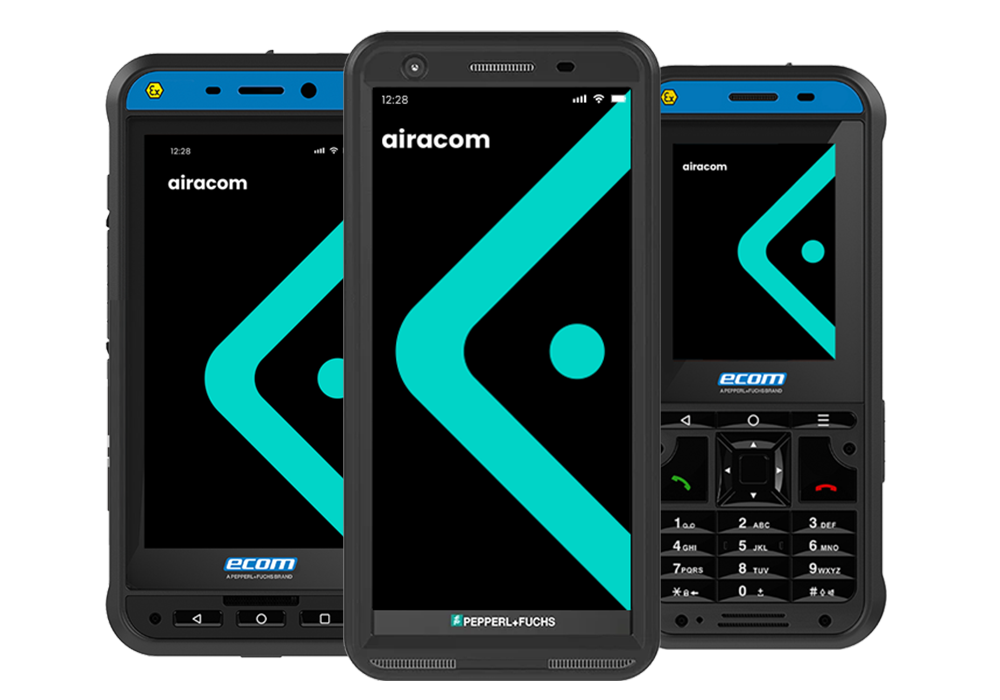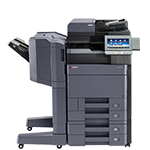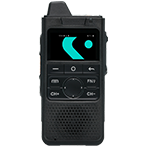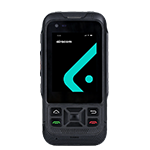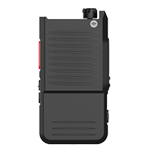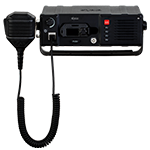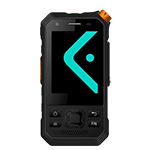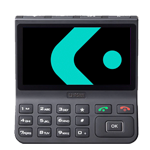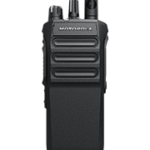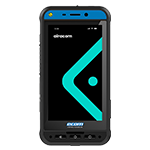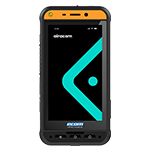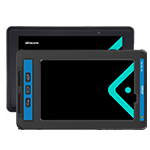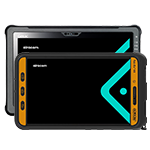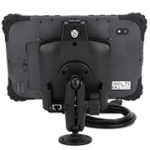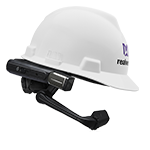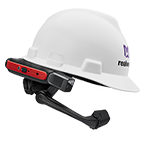What is Push to Talk over Cellular
Understanding instant push to talk over cellular
Communicate with your team at lightning speed using Airacom’s instant push to talk over cellular. With more than 1250 mobile operators, 80 operator groups and over 4600 networks worldwide, there has never been a better time to invest in our push to talk over cellular platform
What is push to talk (APTT)? – Airacom APTT Push to talk, also known as PTT or POC, is a highly secure and encrypted method of broadcasting two-way Voice of IP (VoIP) communications to large groups or individuals using the 3G, 4G, LTE, or 5G infrastructure from mobile network operators, or public or private WiFi or Satellite networks for ubiquitous voice and messaging communications. Unlike traditional two-way radios and walkie-talkies, Airacom APTT push-to-talk software does not use radio frequencies. It, therefore, is not limited to either range or encounter interference from other radios, unlike traditional UHF or VHF radio systems.
Push-to-Talk (PTT), also known as press-to-transmit, is a communication method used in two-way radios and cellular devices, where a user can simply press a button to start transmitting their voice message to a selected recipient or group. It is similar to a walkie-talkie communication style where users can quickly and efficiently communicate with each other without the need to dial a number, wait for a connection, and then start speaking.
In recent years, Push to Talk over Cellular (PTToC or PTT+), also known as Advanced Push to Talk (APTT), has become increasingly popular, providing similar functionality over cellular and internet networks. With PTToC, mobile devices can be used like a traditional two-way radio, with an easy-to-use Push-to-Talk button to initiate communication, but with the added benefit of being able to communicate over long distances and in areas without dedicated radio coverage.
APTT technology is particularly useful for businesses that require fast and efficient communication, such as construction, logistics, public safety, and transportation. It can help improve productivity, reduce costs, and increase safety by providing instant communication and location sharing for mobile workers. Overall, PTT and PTToC have become an essential tools for many businesses and organisations that require quick and reliable communication in the field.
Business critical communications
How does push-to-talk work?
Push-to-talk technology allows users to instantaneously communicate with one or more users at once by pressing a button on a handheld device (typically known as PoC Radio). Groups, referred to as channels in the radio industry, allow numerous users to receive voice audio as long as each user has been allocated to that group. The same applies to messaging, which is typically the standard package offered across the board when considering PTT solutions. Users simply press and hold the dedicated PTT button on their PoC radio to talk. Push-to-talk (PTT) is a communication method that allows users to transmit voice messages by pressing a button. PTT technology is used in various devices, such as two-way radios, cell phones, and computers. The way it works depends on the specific type of device being used.
In traditional two-way radios, users press a physical button to transmit a message. The button is usually located on the side of the device, and users need to hold it down to speak. The radio then transmits the message to other devices in the network, such as other radios, dispatch consoles, or base stations. In modern cell phones, Push-to-Talk over Cellular (PTToC) technology is used to enable PTT functionality. Users can download PTT apps on their phones and use a software-based button to initiate communication. The app then sends the message to the app server, which then routes it to the intended recipient. This method of communication allows users to communicate over long distances and across different networks, including Wi-Fi and cellular.
Overall, PTT works by allowing users to quickly initiate communication with the press of a button, making it an efficient way to communicate in certain situations. PTT technology has become particularly popular in industries that require fast and reliable communication, such as construction, transportation, logistics, and public safety.
Airacom PTT over Cellular (PoC)
Broadband Push-to-Talk Platform
Origins of PoC
Where did PTT come from?
Two-way radios, which were first introduced in the 1940s, are an example of traditional push-to-talk systems. Due to the high demand for push-to-talk in today’s technological world and the costs associated with traditional radios such as physical hardware, license costs, infrastructure and the set-up of network equipment. Traditional radios are slowly fading out and are perceived as inadequate regarding mission-critical communications. The origins of Push-to-Talk (PTT) technology can be traced back to the early days of two-way radio communication in the mid-20th century. Two-way radios were initially used by the military and public safety agencies, but their use soon expanded to commercial and industrial settings.
PTT technology allows users to quickly and easily initiate communication with the press of a button, without the need to dial a number, wait for a connection, and then start speaking. This made communication more efficient and enabled users to stay in constant contact with each other, which was particularly important in industries such as transportation and logistics. As the use of mobile phones became more widespread, PTT technology was adapted for use in cellular networks. Push-to-talk over Cellular (PTToC or PTT+) technology allows users to communicate over long distances and across different networks, including Wi-Fi and cellular. PTToC technology has become increasingly popular in recent years, particularly in industries that require fast and reliable communication, such as construction, transportation, logistics, and public safety.
Overall, PTT technology has evolved over the years, but its core functionality remains the same: enabling users to initiate communication quickly and efficiently with the press of a button, making it an essential tool in many industries.
PoC vs PMR & DMR
Traditional Vs. PTT APP Solution
Push-to-talk walkie-talkies, which resemble two-way radios in appearance and operation but are built with less advanced technology are known collectively to consumers. However, due to their relatively limited communications range, inconsistent audio quality, and other constraints resembling those of two-way radios, walkie-talkies frequently encounter premature failure in a professional work environment. An uncomplicated push-to-talk application that enables users to communicate via push-to-talk on their mobile devices, tablets or dedicated PoC radios while using their own cellular or Wi-Fi connection is a desirable push-to-talk solution in today’s global market across hundreds of industries including construction, healthcare, blue light services, aviation and many more.
It is important to keep in mind that not all PTT apps offer encryption or the specialised features that professional organisations require. With numerous PTT applications accessible on both the Apple and Google Play store, some outstanding, some terrible. It is always recommended that you find a trusted reliable supplier.
Traditional Motorola two-way radios and Push-to-Talk (PTT) technology both allow users to communicate with each other, but they differ in how they operate and the features they offer. Two-way radios are typically used in industries such as public safety, construction, and transportation, where users require reliable and instant communication in the field. Two-way radios use radio frequencies to transmit and receive messages between devices. Users can press a button on the radio to transmit their message to other devices in the network, which can include other radios, dispatch consoles, or base stations. Two-way radios typically offer longer battery life, better durability, and are resistant to interference and signal loss in areas with poor network coverage.
PTT technology, on the other hand, uses cellular or internet networks to transmit and receive messages between devices. PTT technology enables users to communicate over long distances and across different networks, including Wi-Fi and cellular. Users can download PTT apps on their mobile devices and use a software-based button to initiate communication. PTToC technology offers the added benefit of location tracking, and integration with other enterprise applications, such as customer relationship management (CRM) systems. In terms of cost, two-way radios tend to be more expensive to purchase and maintain, while PTT technology offers a more affordable and flexible solution, particularly for small and medium-sized businesses.
Overall, both traditional two-way radios and PTT technology are effective communication tools that are widely used in various industries. The choice between them depends on the specific needs of the user, including the distance over which communication is needed, the level of durability required, and the budget available for the technology.
Mission critical communications
Why is half-duplex communication needed?
Firstly, half-duplex communication requires less bandwidth, and less bandwidth means faster transmission and delivery speeds, at lower costs. Push to Talk is the VoIP and modernisation of outdated radio technology whereby one user speaks, and all other users in the same talk group (channel) can listen. Two-way broadcasting is used where the need for critical and instant communications affects worker safety and improves operational efficiency. With Airacom PTT, there is no ringing, no waiting, and no delay when sending PTT voice communications over VoIP. Reducing the communications down to half-duplex, and making the push-to-talk platform only accessible for any user to broadcast a voice call at any time, reduces the potential for unclear or mixed messages and instructions. In addition, it stops all users from speaking simultaneously which increases the quality of the instruction while reducing any background noise.
Half-duplex communication is a communication method that allows two devices to communicate with each other, but only one device can transmit data at a time. This method of communication is used in various applications, such as two-way radios, walkie-talkies, and push-to-talk (PTT) devices. Half-duplex communication is needed in situations where only one device can transmit data at a time to avoid interference and data collisions. In a half-duplex communication system, each device takes turns transmitting and receiving data, allowing for more efficient and reliable communication. This is particularly important in applications where the available bandwidth is limited, such as in wireless communication systems.
Half-duplex communication is also useful in situations where multiple users are sharing a communication channel, such as in a walkie-talkie system or PTT network. In these scenarios, half-duplex communication allows users to take turns transmitting data, ensuring that everyone has an opportunity to communicate and that data collisions are avoided. Overall, half-duplex communication is an essential tool for efficient and reliable communication in various applications, particularly in situations where multiple users are sharing a communication channel or where available bandwidth is limited.
Poc radio devices
What is PoC and what are PoC radios?
PoC stands for push to talk over cellular, also known as PTToC and allows users to use enhanced group communications over a 3G, 4G, LTE or 5G mobile network.
Unlike two-way radios that use VHF or UHF frequencies, POC radios work using cellular data from a mobile network operator. They share similar characteristics to a smartphone with Android operating systems and the ability to download and run mobile applications to extend the operational use case. However, a POC radio’s primary function is Push-to-Talk. Unlike smartphones, they are designed with a dedicated PTT button or PTT key similar to a walkie-talkie or land mobile radio.
control room software
What is a PC-Based push to talk system?
With hybrid working and the need for central office staff to keep in direct contact with frontline and remote workers, we have created Push to Talk on PCs and laptop devices. Customers can now run our highly secure push-to-talk platform on a browser or via a desktop PC and make PTT calls anywhere.
The Device Dilemma: Solved
How does Satellite push-to-talk work?
Push-to-talk over Satellite (PTToS) is a service where broadband is beamed from space using portable or fixed satellite WiFi devices. Then connectivity is distributed to the Push-to-talk users via their PoC radios, smartphone devices or laptops, and PCs. Satellite push to talk, by nature, is more expensive as a service and carries higher infrastructure and running costs compared to traditional Push to Talk over Cellular. Satellite push-to-talk (PTT) is a communication method that allows users to communicate with each other over satellite networks. This technology is commonly used in industries such as transportation, oil and gas, mining, and public safety, where communication is required in remote locations where traditional cellular networks may not be available.
Satellite PTT works in a similar way to traditional PTT technology, but instead of using cellular or internet networks, it uses satellite networks to transmit and receive data. Users can communicate with each other through satellite-enabled PTT devices, such as handheld radios or mobile phones equipped with satellite modules. These devices have a PTT button that allows users to initiate communication instantly. Satellite PTT technology uses L-band satellite frequencies to transmit and receive data, which provides global coverage and enables communication in areas without cellular coverage. The communication is encrypted for security, and many satellite PTT services provide location tracking and group communication features.
Satellite PTT technology is particularly useful in industries where communication is critical and cellular coverage is not always available. It provides a reliable and efficient way to communicate over long distances and in remote locations, where traditional communication methods may not be sufficient. Overall, satellite PTT technology is an essential tool for many industries, providing a reliable and secure way to communicate with remote teams in any location around the world.
Explore our range of intrinsically safe smartphones
Looking beyond intrinsically safe phone cases? Seek a dedicated Android ATEX smartphone or mobile designed specifically for high-risk environments. Our selection includes Zone 1 and Zone 2 intrinsically safe smartphones, engineered with safety and performance in mind. Explore our range to find the ideal device that meets your specific hazardous location requirements.
